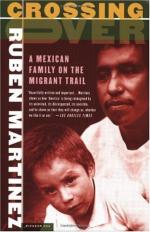|
This section contains 1,350 words (approx. 5 pages at 300 words per page) |

|
Crossing over, or recombination, is the exchange of chromosome segments between nonsister chromatids in meiosis. Crossing over creates new combinations of genes in the gametes that are not found in either parent, contributing to genetic diversity.
Homologues and Chromatids
All body cells are diploid, meaning they contain pairs of each chromosome. One member of each pair comes from the individual's mother, and one from the father. The two members of each pair are called homologues. Members of a homologous pair carry the same set of genes, which occur in identical positions along the chromosome. The specific forms of each gene, called alleles, may be different: One chromosome may carry an allele for blue eyes, and the other an allele for brown eyes, for example.
Meiosis is the process by which homologous chromosomes are separated to form gametes. Gametes contain only one member of each pair of...
|
This section contains 1,350 words (approx. 5 pages at 300 words per page) |

|


